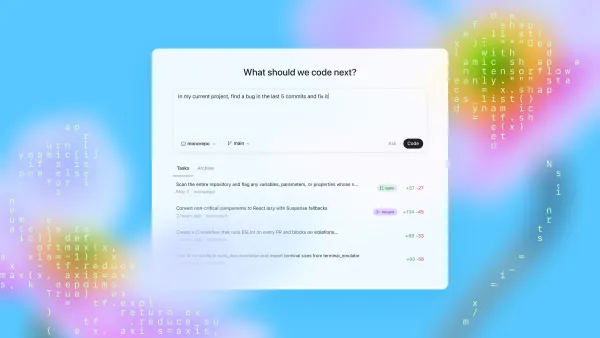Thursday, September 04 • AI Product Intelligence

Today's Summary:
The top AI news stories cover a range of research, product, and technical topics, including advancements in user interface agents, natural language processing, generative ecosystems, and multimodal deep learning for healthcare applications. While the research papers demonstrate progress in these areas, the practical implications for product teams remain limited, with the focus mainly on improving underlying capabilities rather than delivering near-term customer value. Product managers should closely monitor these developments but focus on incremental improvements to existing AI-powered products and services.
Coverage: 109 stories analyzed
THE HOOK
New benchmark alert: Language Models Do Not Follow Occam's Razor: A Benchmark for Inductive and Abductive Reasoning
This research challenges the assumption that language models naturally follow Occam's Razor—the principle of simplicity—in their reasoning. The authors introduce a programmable dataset, InAbHyD, that tests inductive and abductive reasoning, beyond common deductive reasoning. Results show that even state-of-the-art models struggle to generate high-quality, simple hypotheses, even with in-context learning.
📍 Practical takeaway: AI product teams must carefully evaluate reasoning capabilities beyond deduction when building real-world systems.
⚡ HIGH VOLTAGE
KEY STORIES
1. Beyond Words: Interjection Classification for Improved Human-Computer Interaction
TLDR: Academic deep-dive into AI technology
Researchers created a dataset of interjections like “mmm” and “hmm,” often overlooked in ASR systems, and trained a model with augmentation techniques (tempo, pitch). Recognition accuracy improved significantly—closing a gap in natural dialogue systems.
📍 arXiv • Score: 0.64 📈 • Deep dive
2. ANNIE: Be Careful of Your Robots
TLDR: New evaluation benchmark - useful for AI systems teams
ANNIE introduces a framework and benchmark (ANNIEBench) for testing safety in embodied AI. 2,400 scenarios revealed vulnerabilities—small sensor perturbations triggered unsafe actions in >50% of tests.
📍 arXiv • Score: 0.64 📈 • Deep dive
3. Simulacra Naturae: Generative Ecosystem via Brain Organoids
TLDR: Generative AI research with potential product applications
Brain organoids generated biosignals driving generative visuals, spatial audio, and clay artifacts in a “living” ecosystem. Blends biology, computation, and art—showing how nontraditional signals can power creative generative systems.
📍 arXiv • Score: 0.64 📈 • Deep dive
4. Language Models vs. Occam's Razor
TLDR: Academic deep-dive into AI technology
Benchmark (InAbHyD) shows LLMs falter at inductive/abductive reasoning, producing weak, non-simple hypotheses under complexity. Implication: not yet ready for real-world reasoning-heavy applications.
📍 arXiv • Score: 0.62 📈 • Deep dive
5. Automatic Differentiation of Agent-Based Models
TLDR: Academic deep-dive into AI technology
Automatic Differentiation (AD) boosts ABM efficiency by enabling gradient-based calibration—making large-scale simulations (epidemics, finance, etc.) far more practical.
📍 arXiv • Score: 0.62 📈 • Deep dive
6. Scaffolding Collaborative Learning in STEM
TLDR: Academic deep-dive into AI technology
New teaching method: real-time coding, experiment tracking, and peer review. Increased fairness in grading, higher engagement, and more accurate evaluation—applicable to ML team workflows too.
📍 arXiv • Score: 0.62 📈 • Deep dive
7. Designing a Lightweight GenAI Interface for Visual Data Analysis
TLDR: Interface design research with direct product implications
Hybrid system: GenAI interprets natural language into statistical models, while visualizations prevent hallucinations and keep humans in control. Balanced approach to GenAI-powered analytics.
📍 arXiv • Score: 0.62 📈 • Deep dive
8. Multimodal Deep Learning for Breast Cancer Subtyping
TLDR: Academic deep-dive into Deep Learning
New flexible framework integrates medical images, genetics, and records—classifying cancer subtypes more accurately and scaling without retraining. Opens the door to more personalized diagnostics.
📍 arXiv • Score: 0.61 📈 • Deep dive
9. The Role of Embodiment in Robot Teleoperation
TLDR: Academic deep-dive into AI technology
VR increased task time and workload in robot teleoperation. Coupling arm/base controls showed efficiency, but complexity remains high. Key finding: embodiment choices matter for usability.
📍 arXiv • Score: 0.60 📈 • Deep dive
10. LINKER: Knowledge-Enhanced Reasoning for Protein-Ligand Binding
TLDR: New evaluation benchmark - useful for AI systems teams
LINKER predicts protein-ligand interactions from sequences alone—bypassing 3D structure requirements. Unlocks scalable drug discovery with explainability intact.
📍 arXiv • Score: 0.60 📊 • Deep dive
Sources: Research papers, industry blogs, technical communities, and the occasional Twitter rabbit hole



